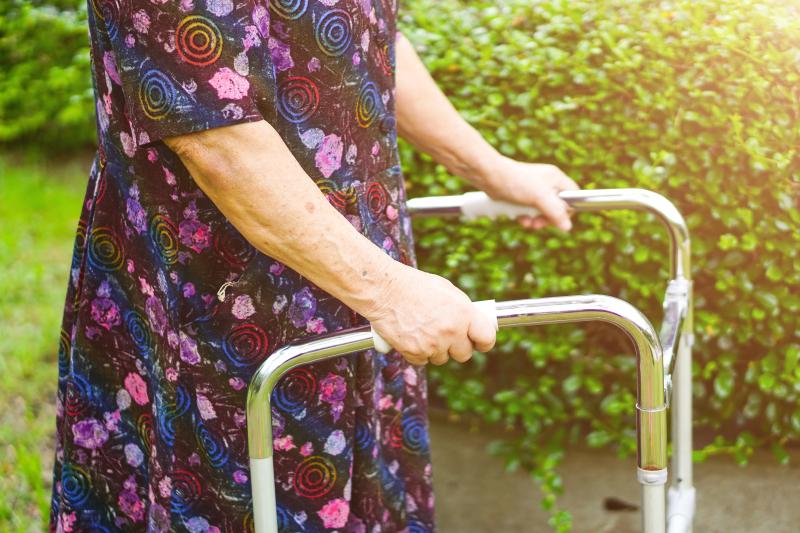
Elderly fallers are generally not at their full strength especially when their grip is subjected to additional torque, endurance or both, according to a Singapore study.
Elderly people who were at increased risk of falling could only achieve about 60–80 percent of their maximum normative strength. Moreover, it appeared that their functional isometric grip strengths were usually weaker than their static maximal grip strength. [Proc Singapore Healthc 2019;28:252-258]
This finding was more pronounced during isometric supination as either maximum or sustained isometric supination grip strengths in the dominant hand (males: 10.6 and 8.5 kg, respectively; females: 6.0 and 4.4 kg, respectively).
“[These] findings have potential implications for designing better screening tools for the geriatric population, which may contribute to identifying elderly people who are at a higher risk of falling,” the researchers said.
An earlier study suggested that grip work, which is calculated based on both maximal grip strength and duration the individual can maintain before the strength decreases to a critical threshold, could potentially be used in geriatric assessment. [J Nutr Health Aging 2011;15:731-736]
Its findings revealed the significant association of grip work with physical functioning, mobility and self-perceived fatigue. Thus, the authors proposed that this would be a reliable method to monitor changes in muscle endurance and fatigue in geriatric patients.
Another study reported that elderly people showed rapid decline in grip strength during the first 10 seconds of their sustained strength, and their grip work was markedly lower than that of their physically independent counterparts. [Exp Gerontol 2017;98:192-198]
Grip work, however, was not calculated in the present study, but the results revealed similar grip strength characteristic, in which the sustained grip strength appeared to be lower than maximum grip strength, according to the researchers.
Grip strength, characterized by the overall muscle strength and functional capacity of an individual, has been used as an important clinical tool in evaluating early symptoms of frailty in ageing individuals. [Rev Esc Enferm USP 2016;50:86-92; Age Ageing 2014;32:650-656; Am J Phys Med Rehabil 2004;83:819-826; Age Ageing 2010;39:331-337; J Geriatr Phys Ther 2008;31:3-10; J Hand Ther 1999;12:212-218]
Normative reference values have been established for specific populations, such as those in Singapore, South Korea, Canada and Europe, according to the researchers. Cutoff grip strength values have also been implemented to screen elderly people at risk. [J Hand Ther 2018;31:122-128; J Am Med Dir Assoc 2016;17:864.e1-7; Arch Plast Surg 2013;40:52-56; Am J Occup Ther 1995;49:637-644; J Hand Surg Am 2008;33:558-565; J Am Geriatr Soc 2010;58:1721-1726; J Am Med Dir Assoc 2014;15:95-101]
The present study analysed data from 31 elderly people (20 females) aged ≥70 years. Three measurements were taken using a custom-made hand strength measurement device: grip strength in neutral forearm position, grip strength during isometric forearm pronation and grip strength during isometric forearm supination.
“The main limitation of our study is the small sample size, because about 40 percent of the elderly fallers recruited were unable to comply with or complete the functional grip strength assessments,” the researchers said.